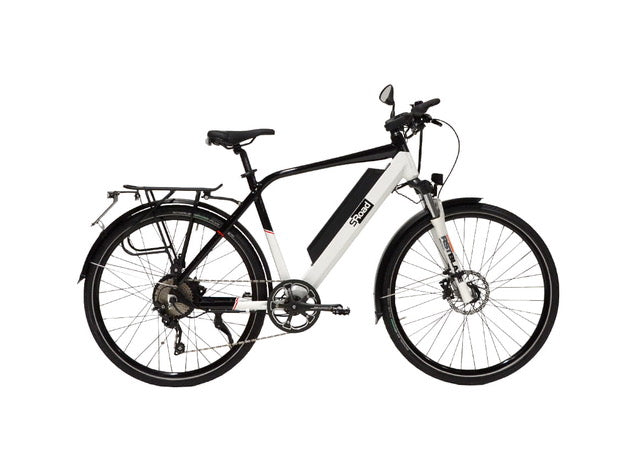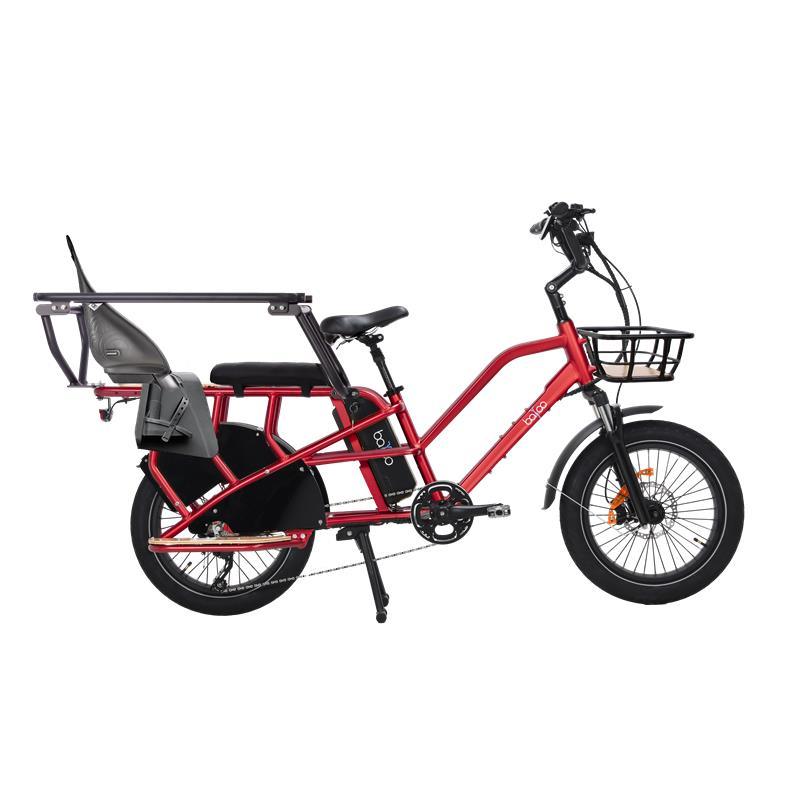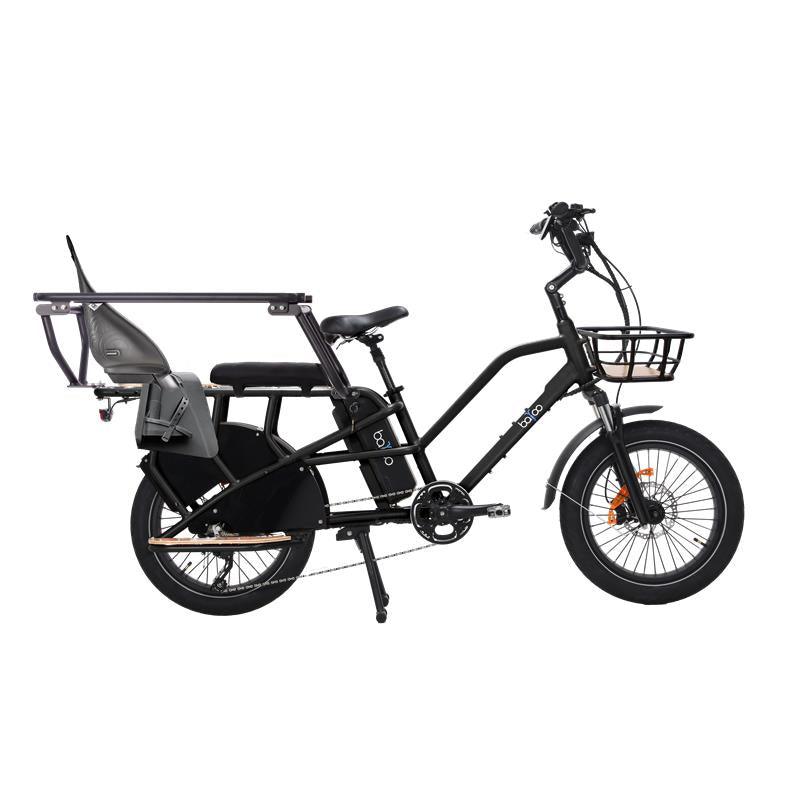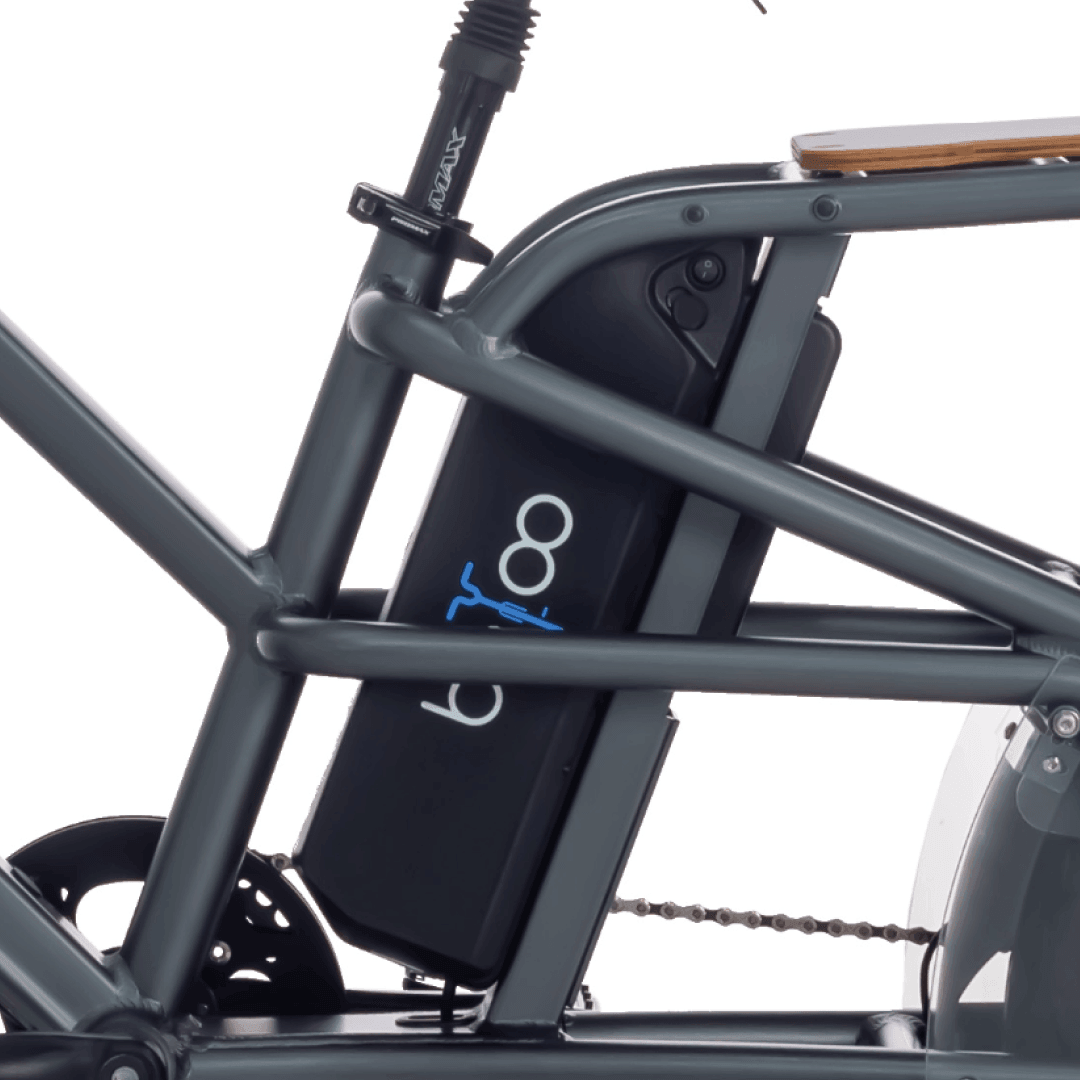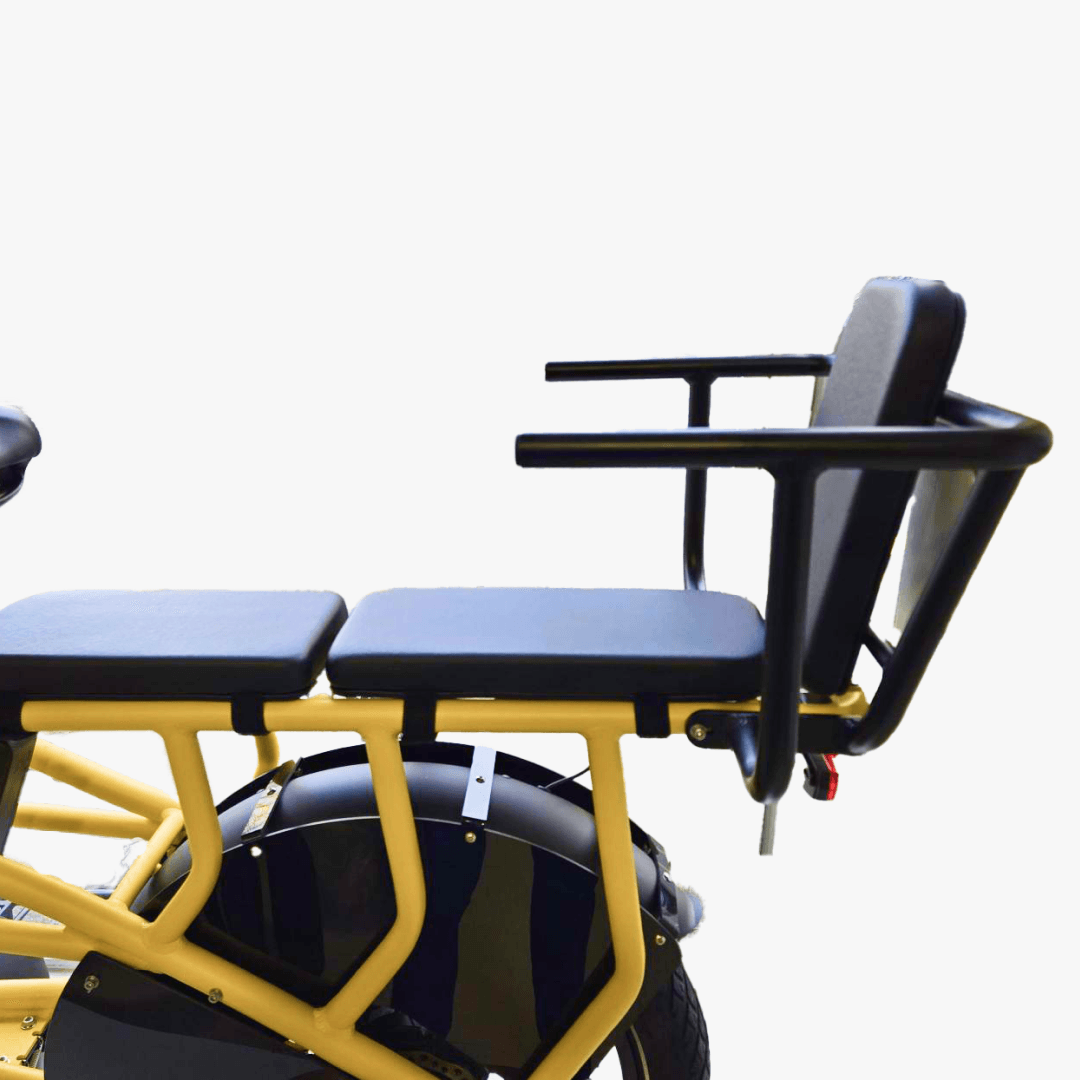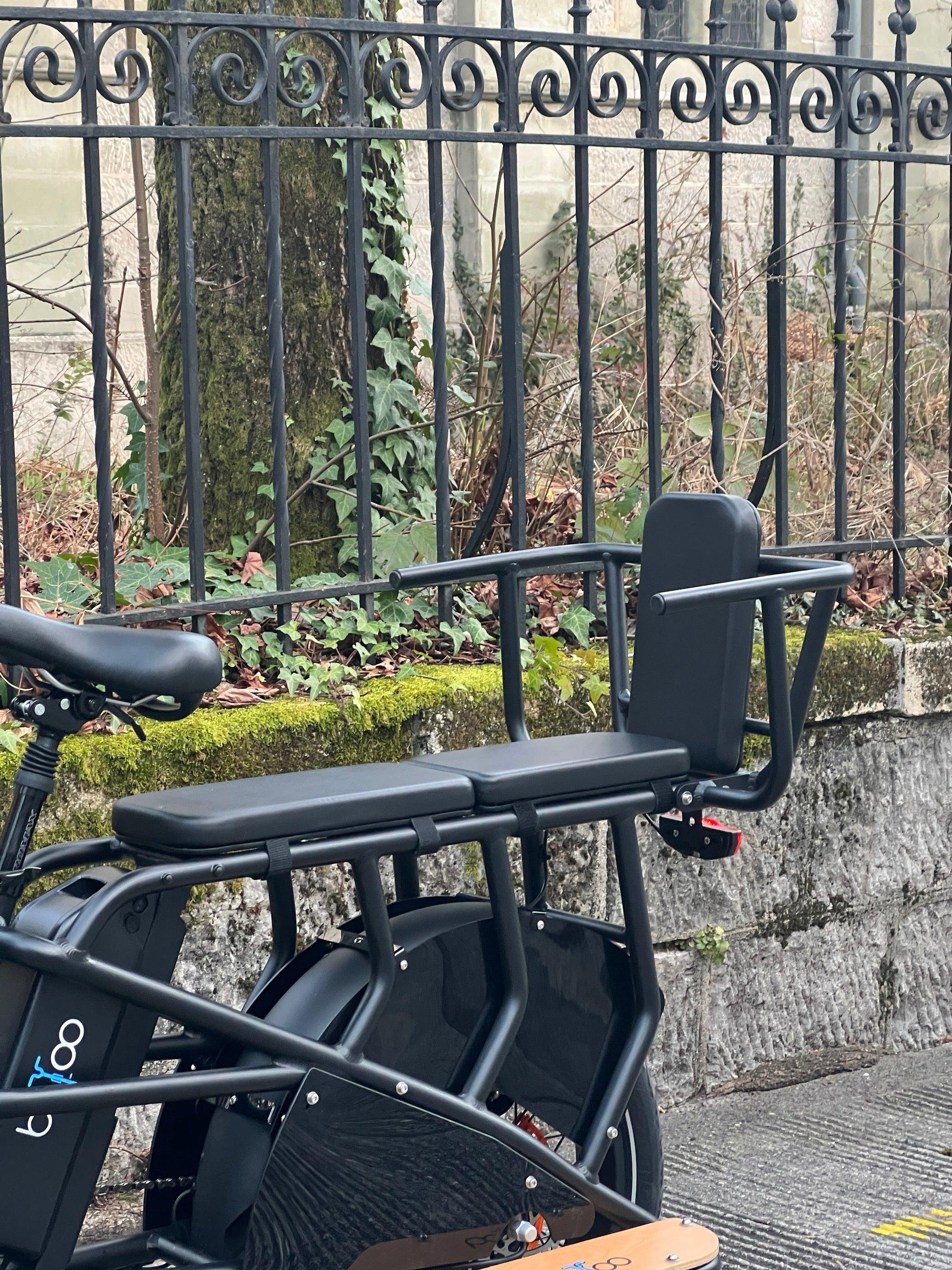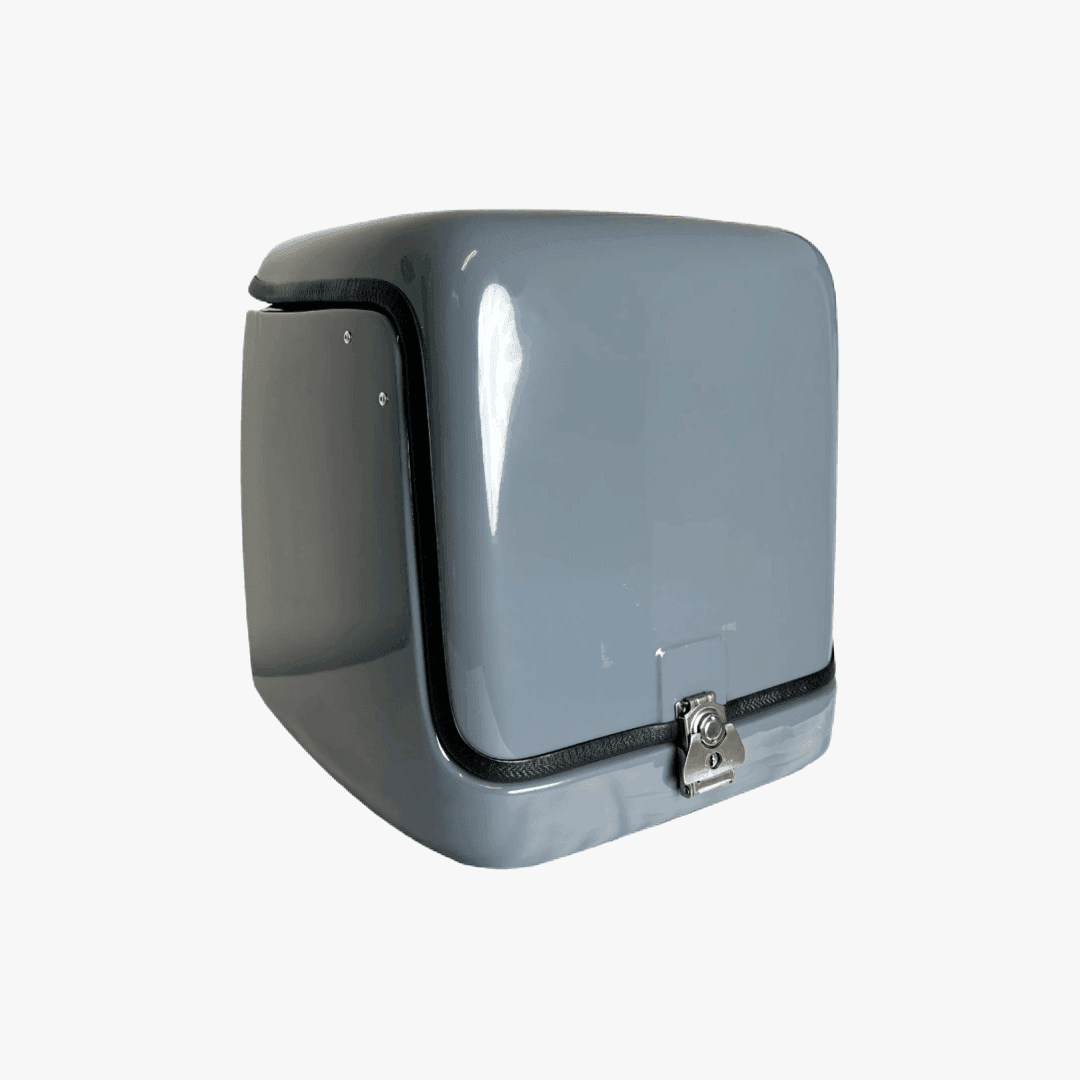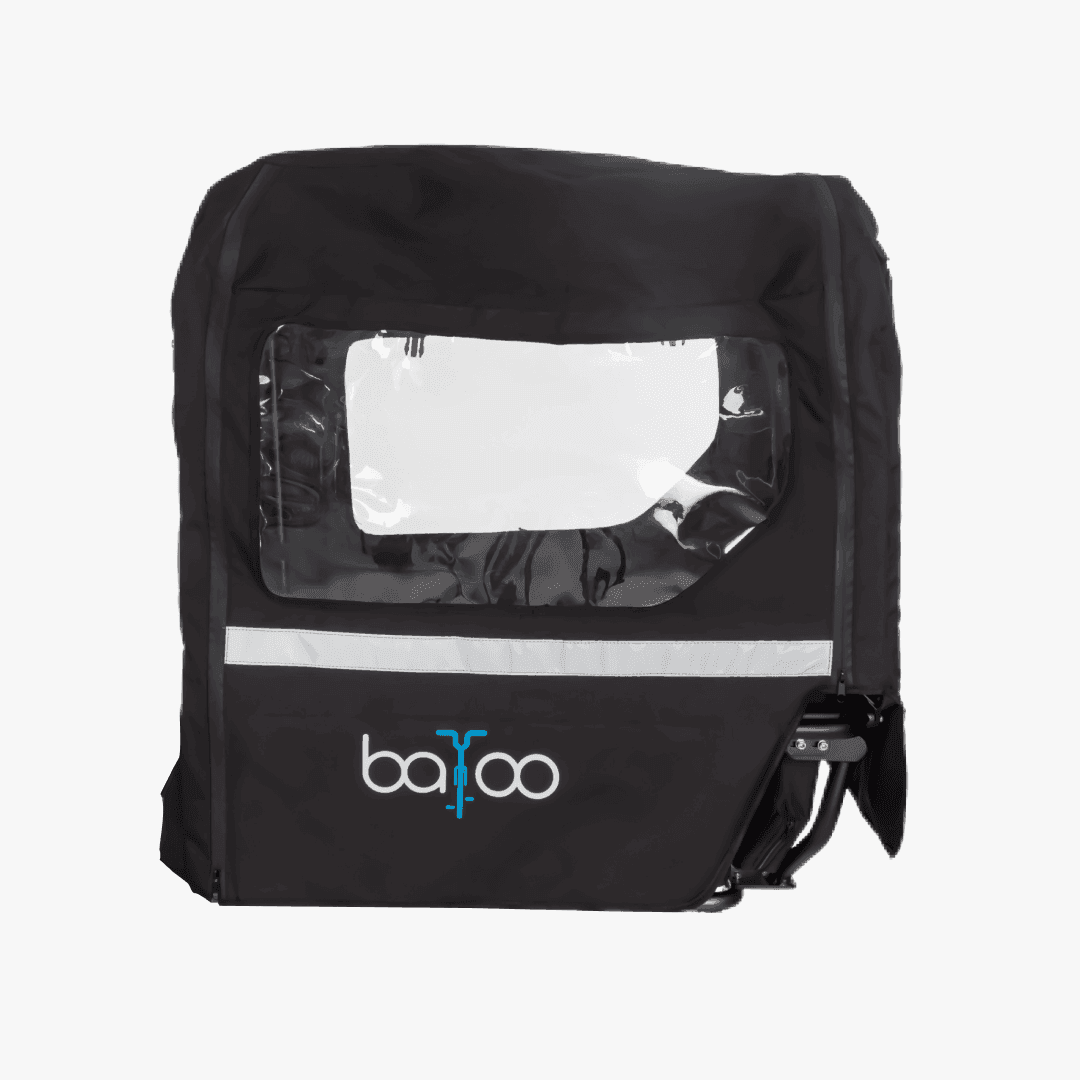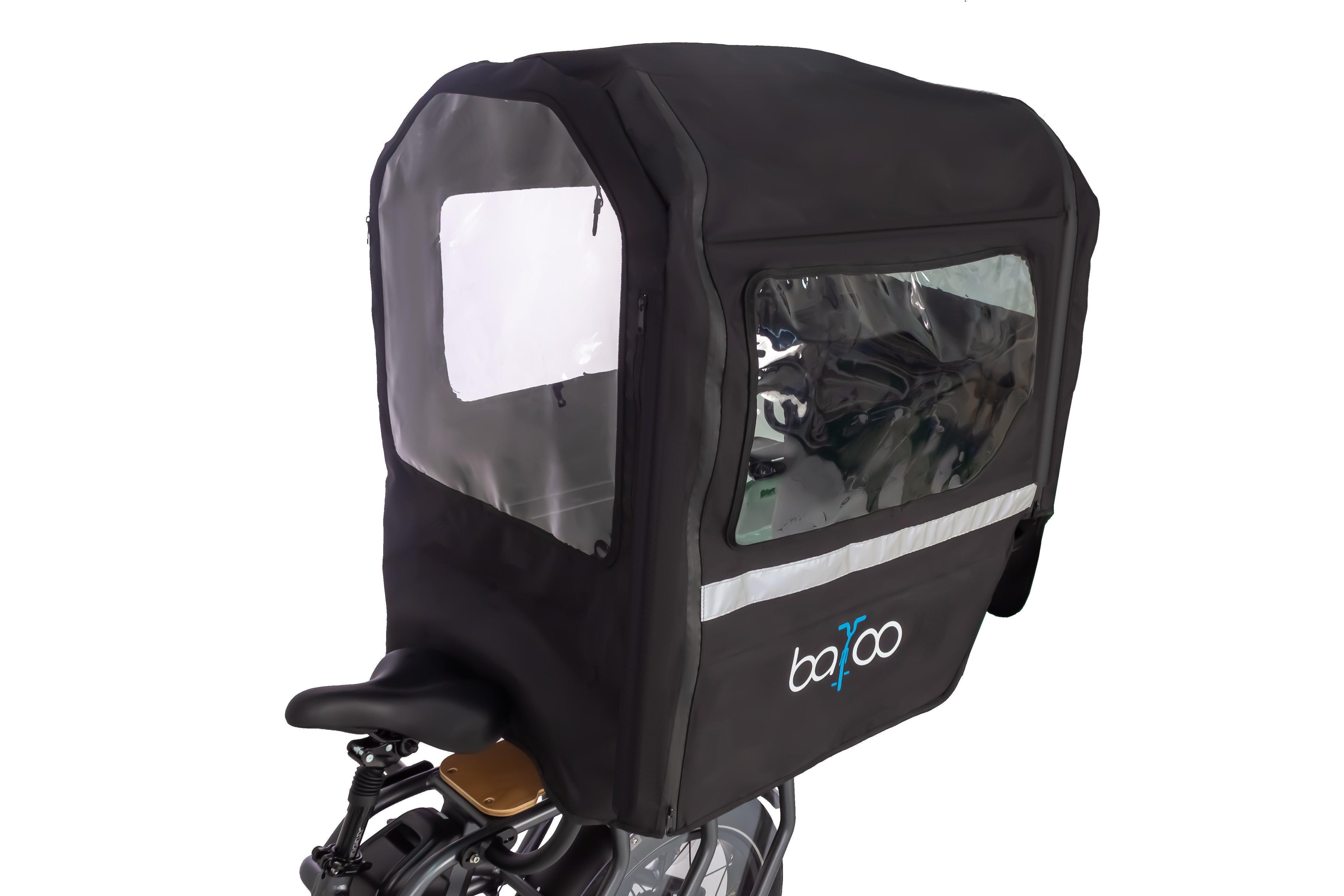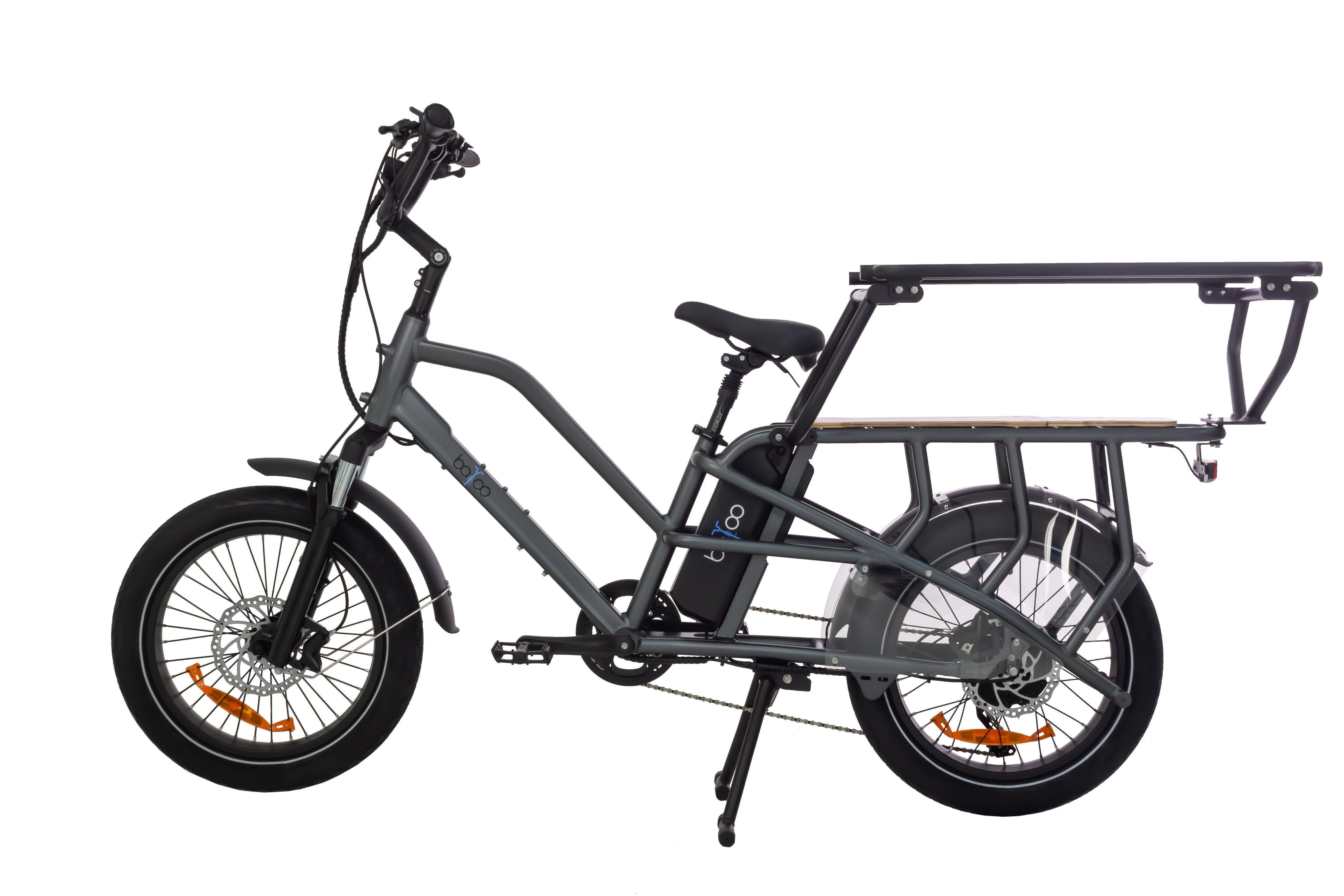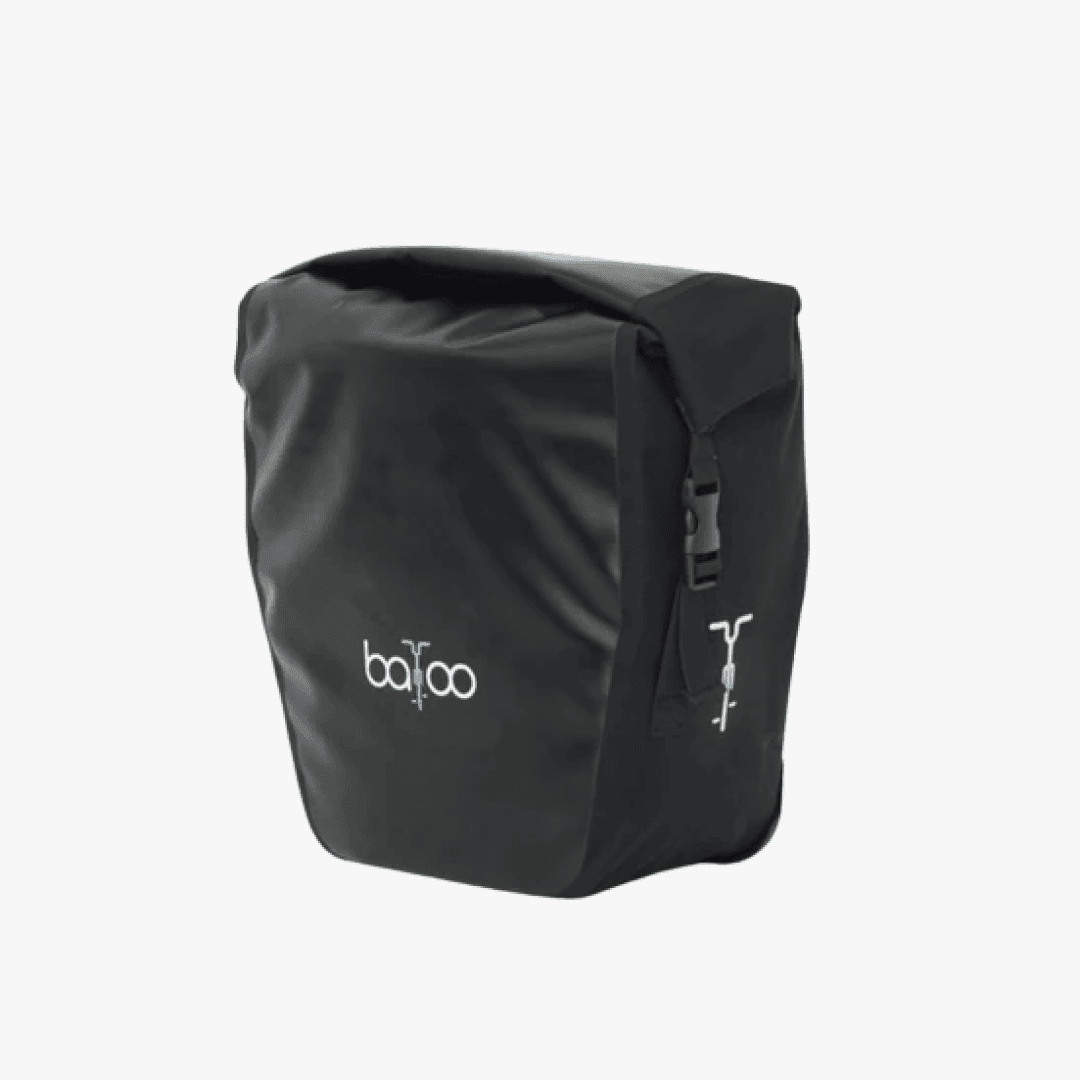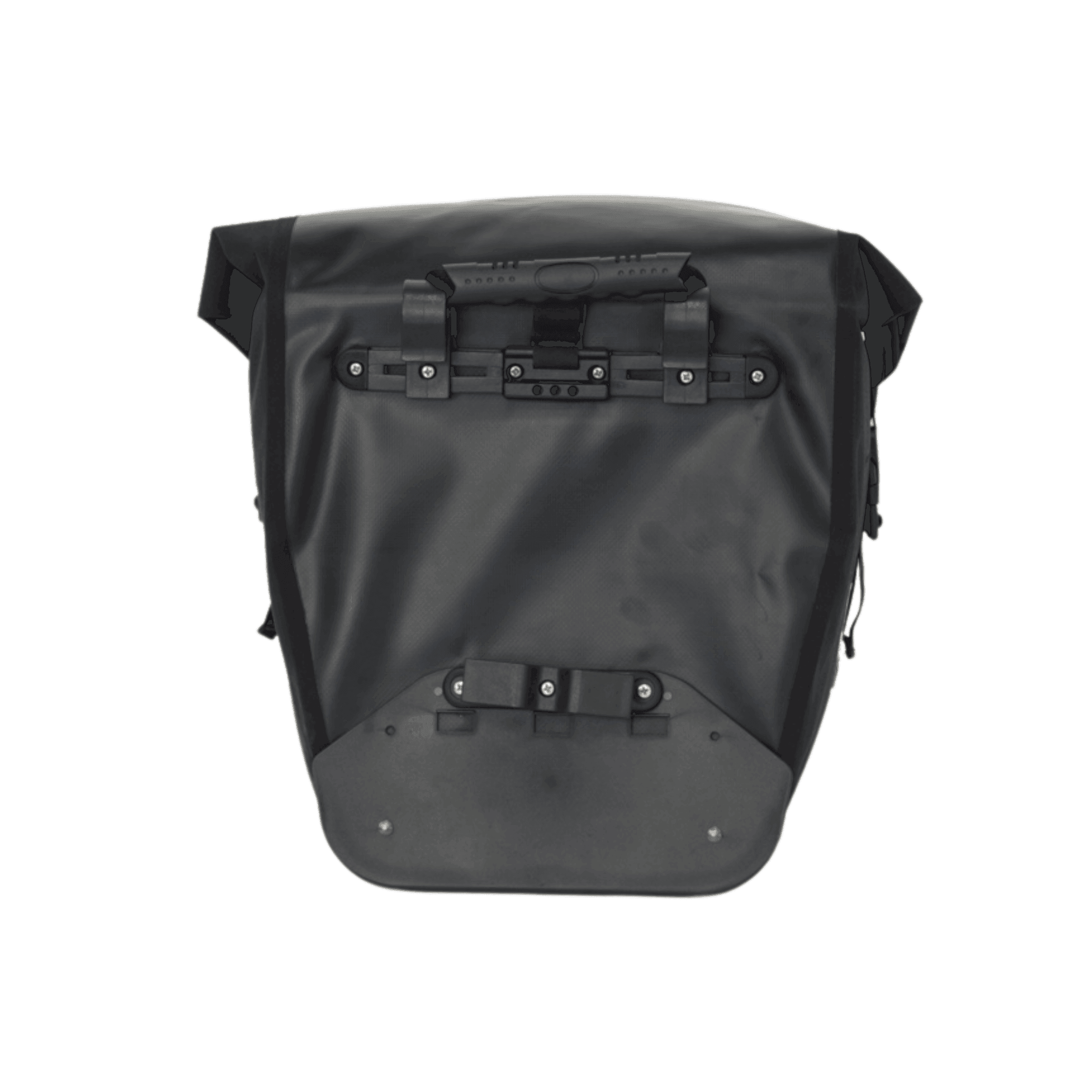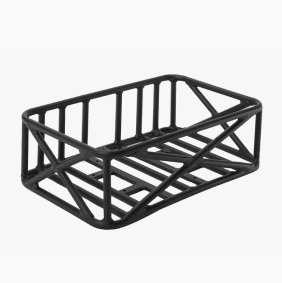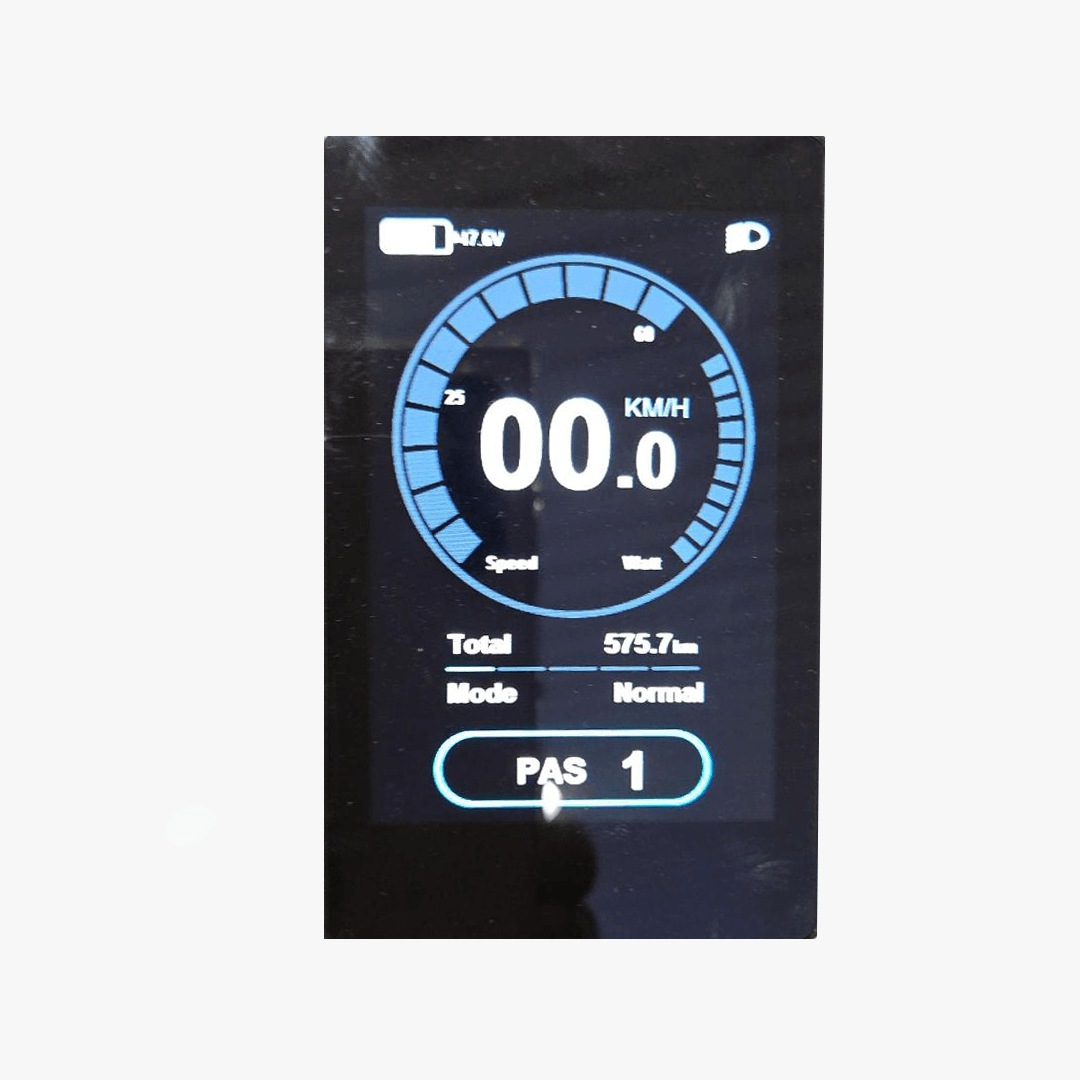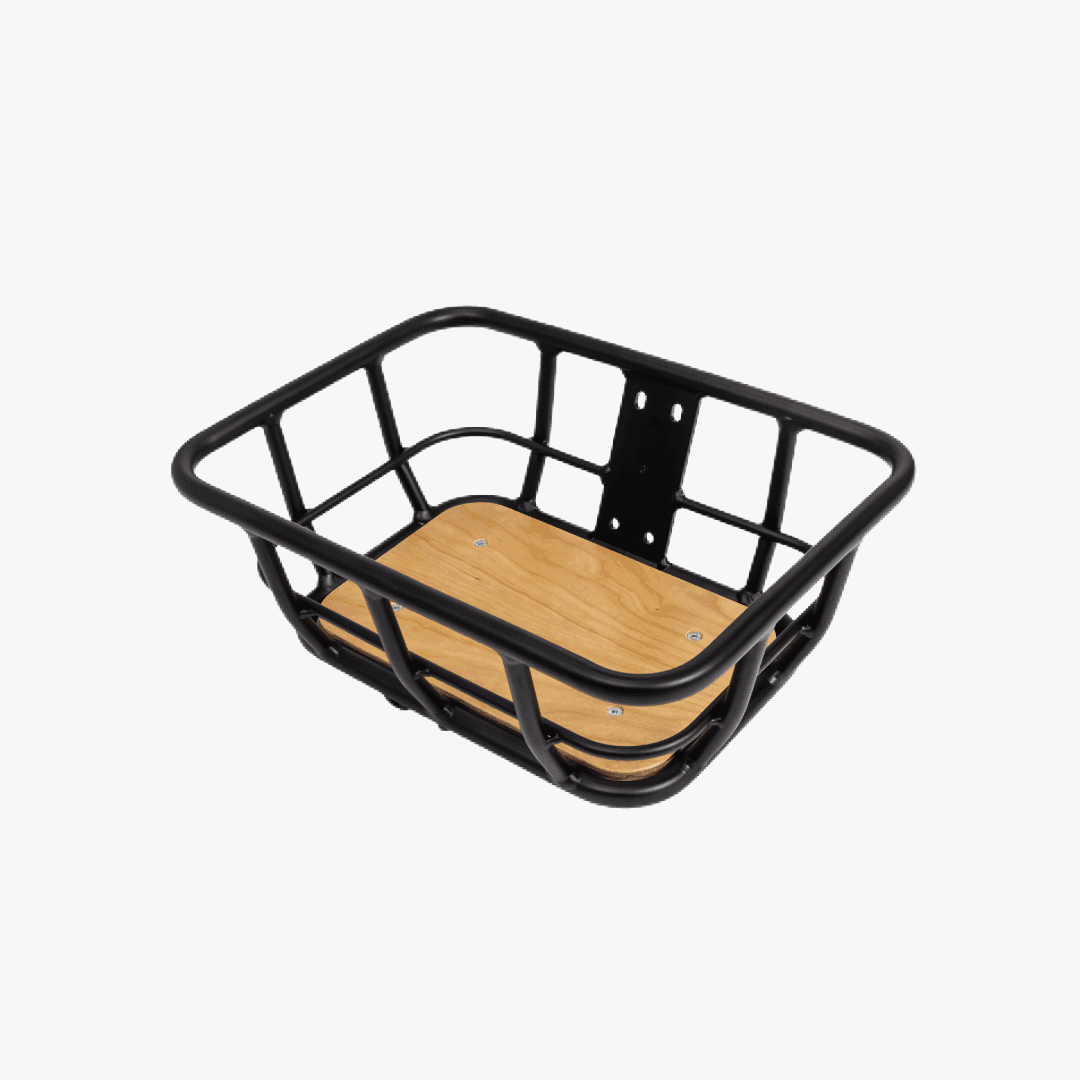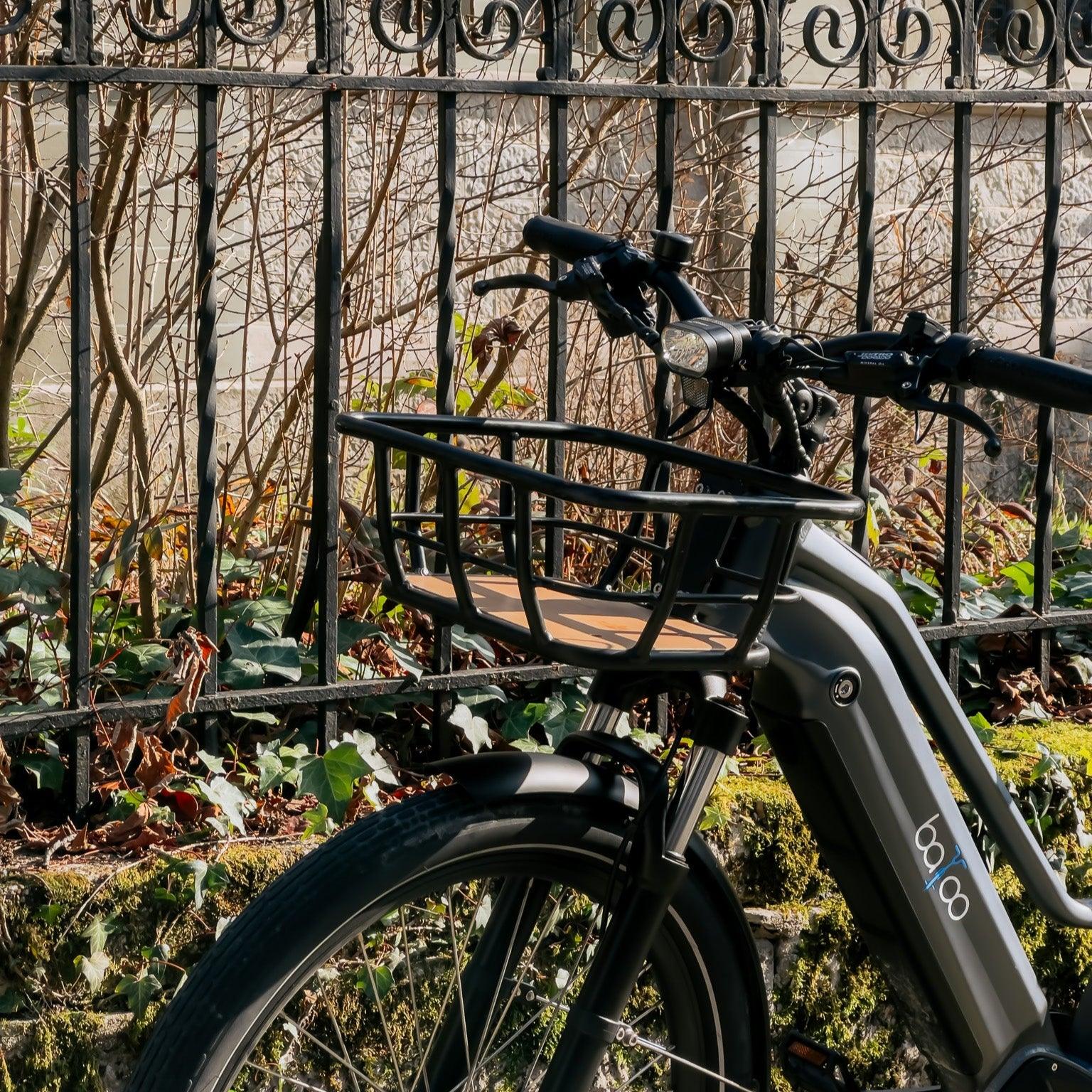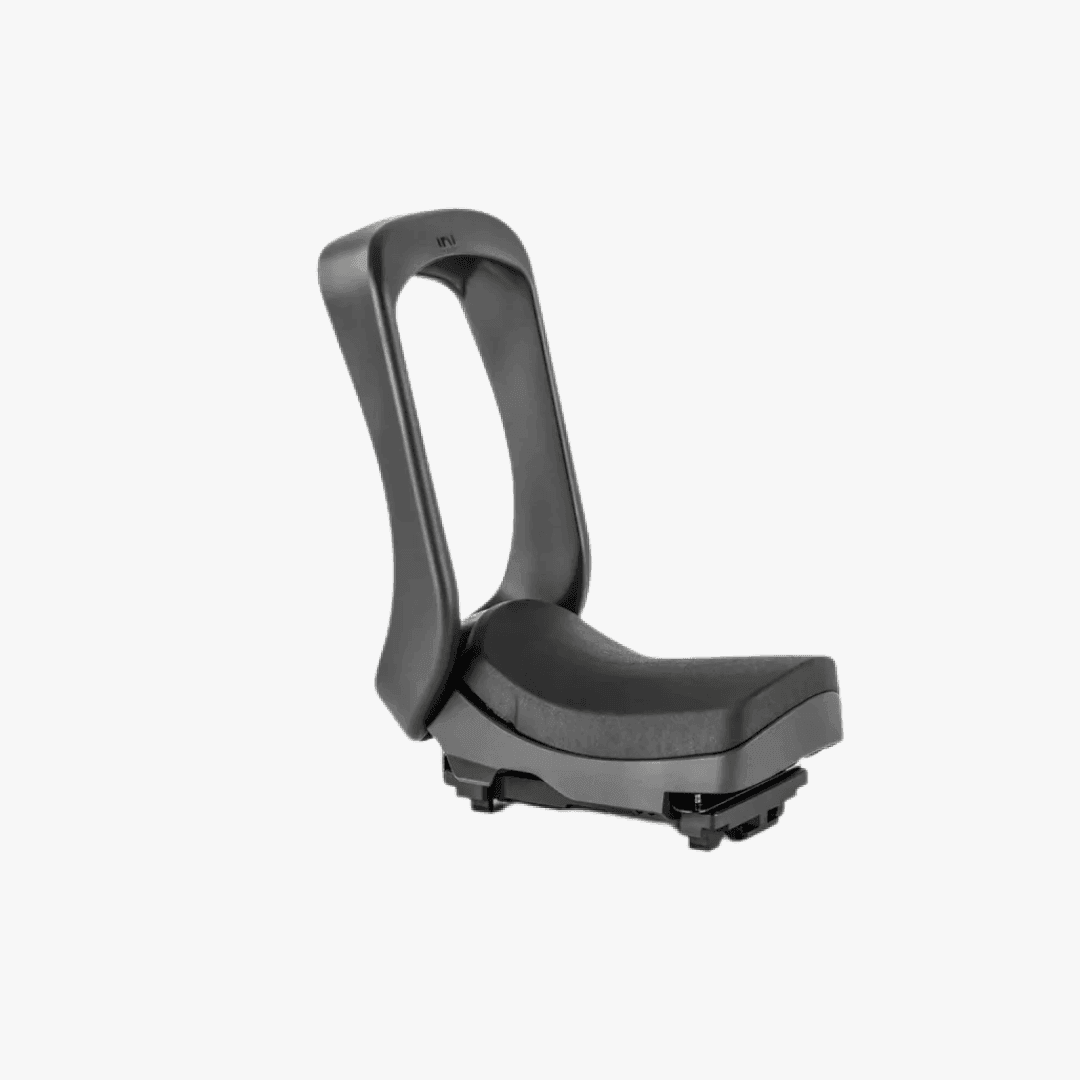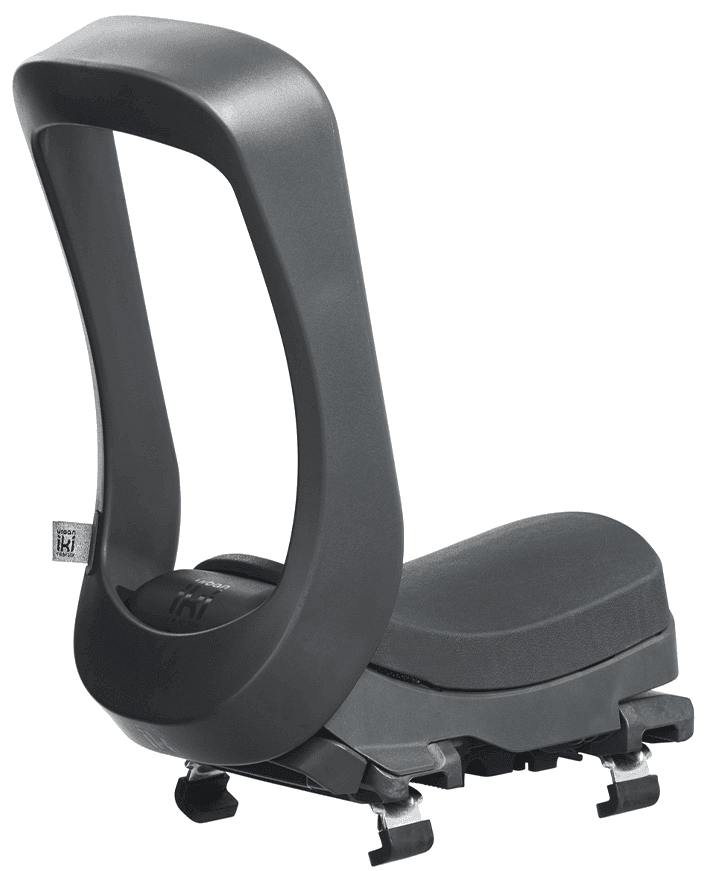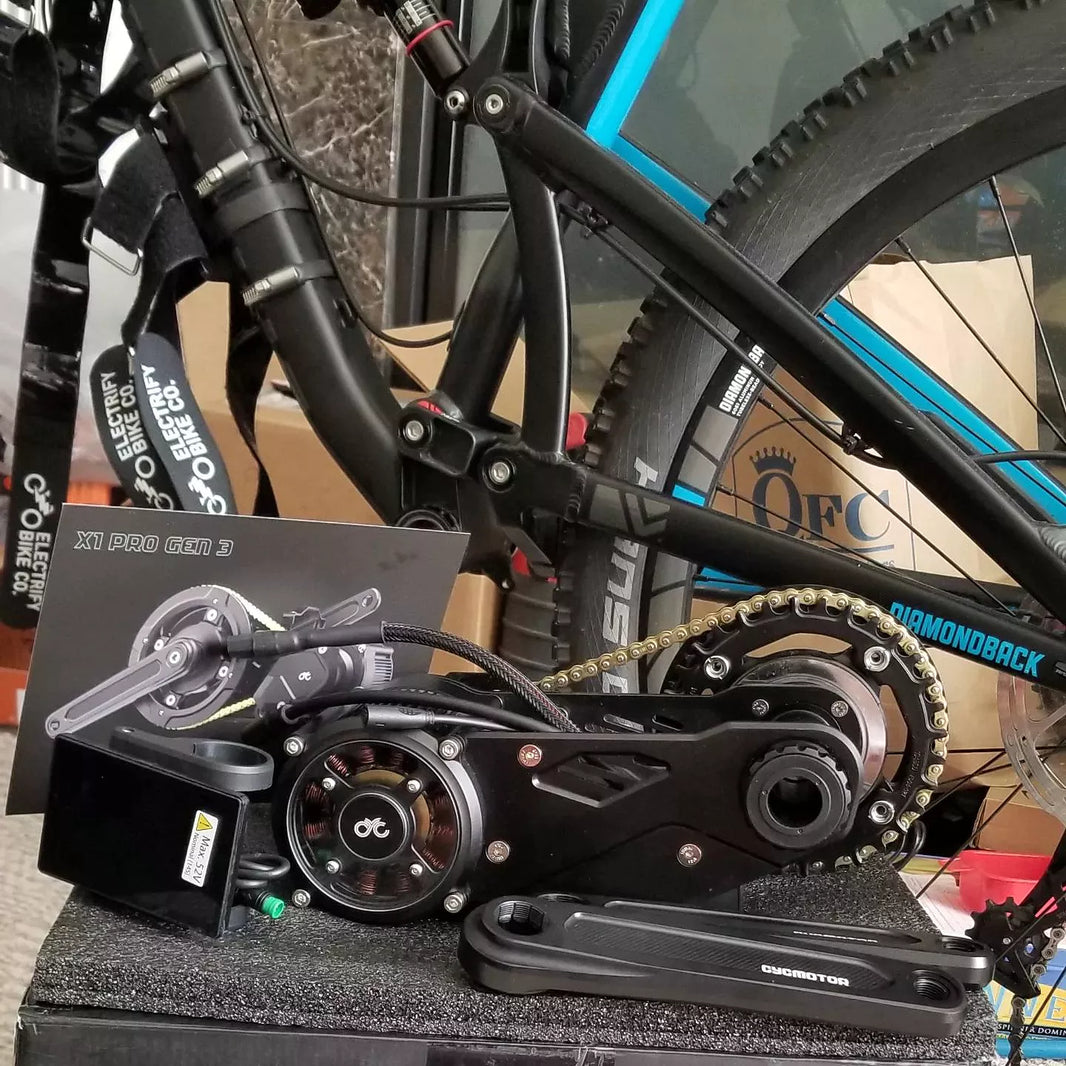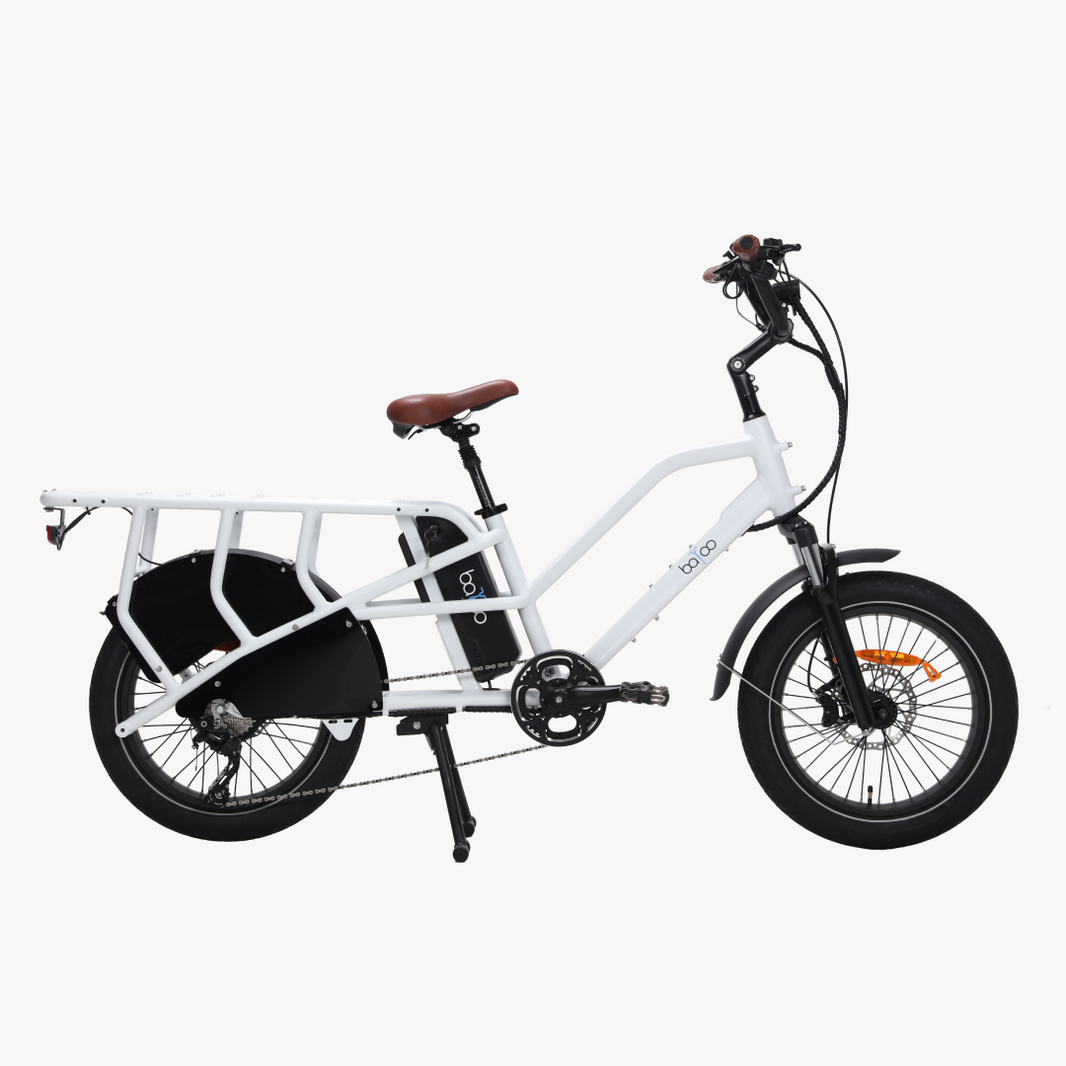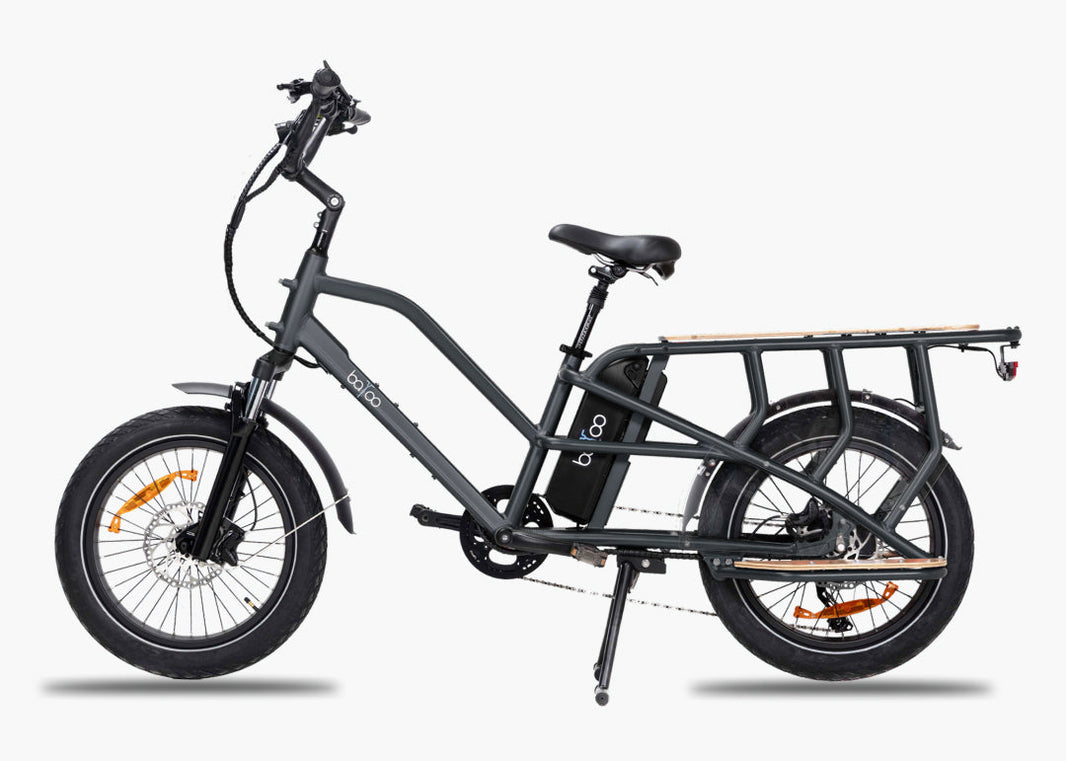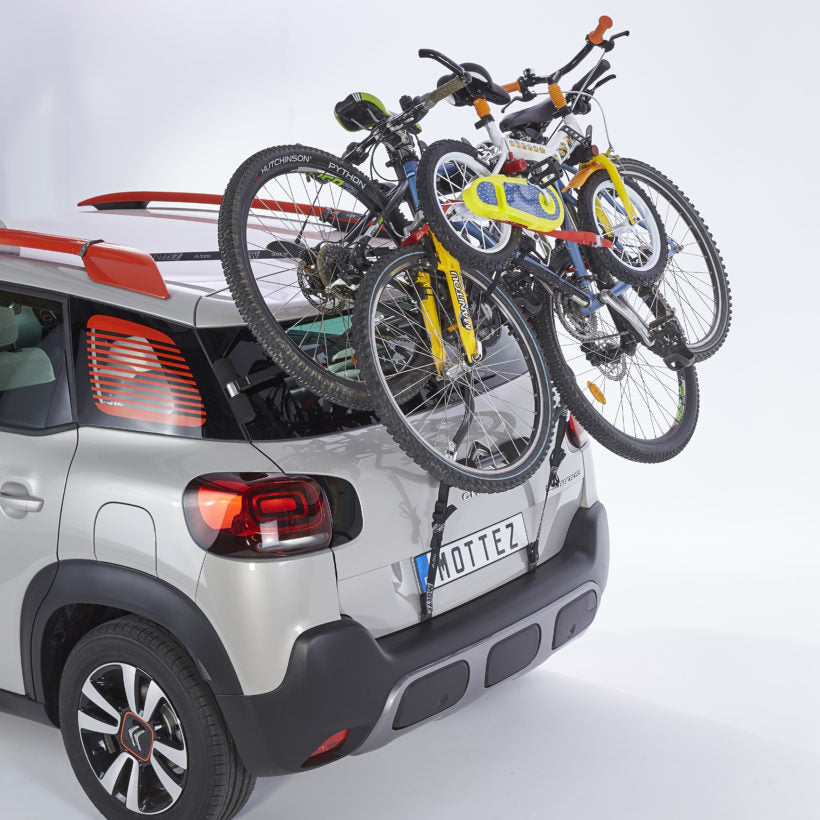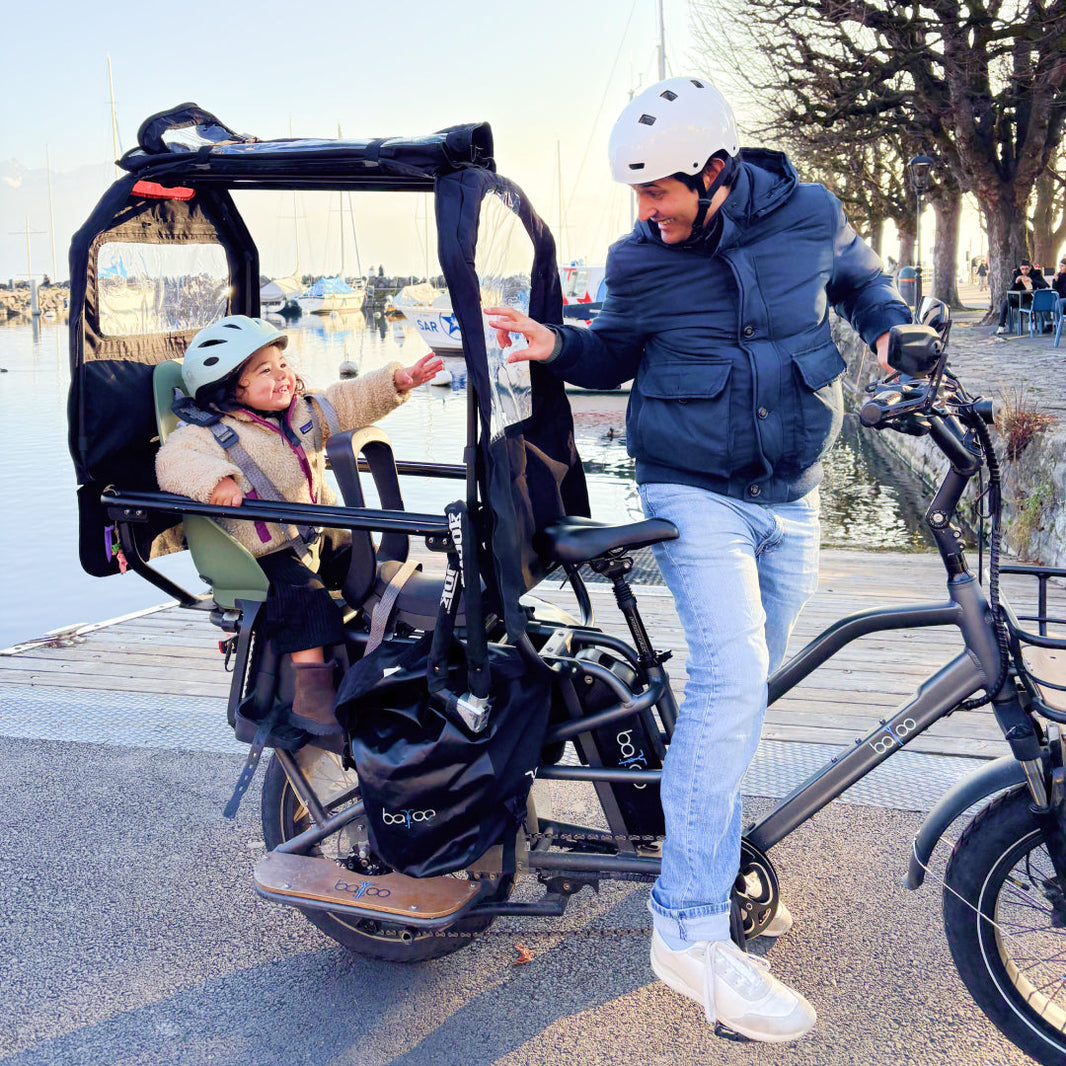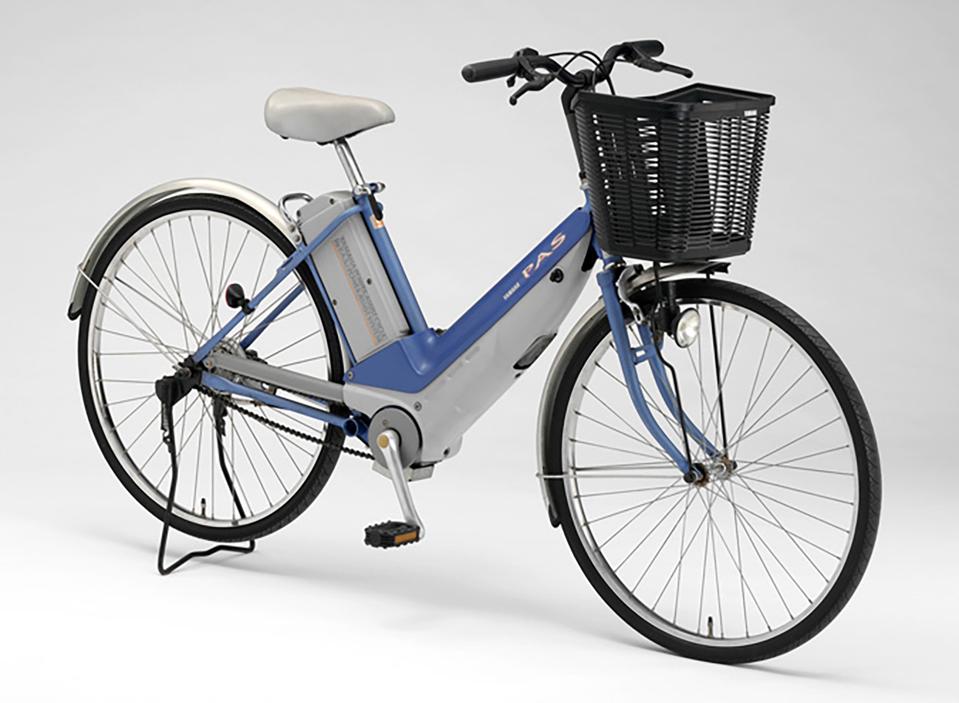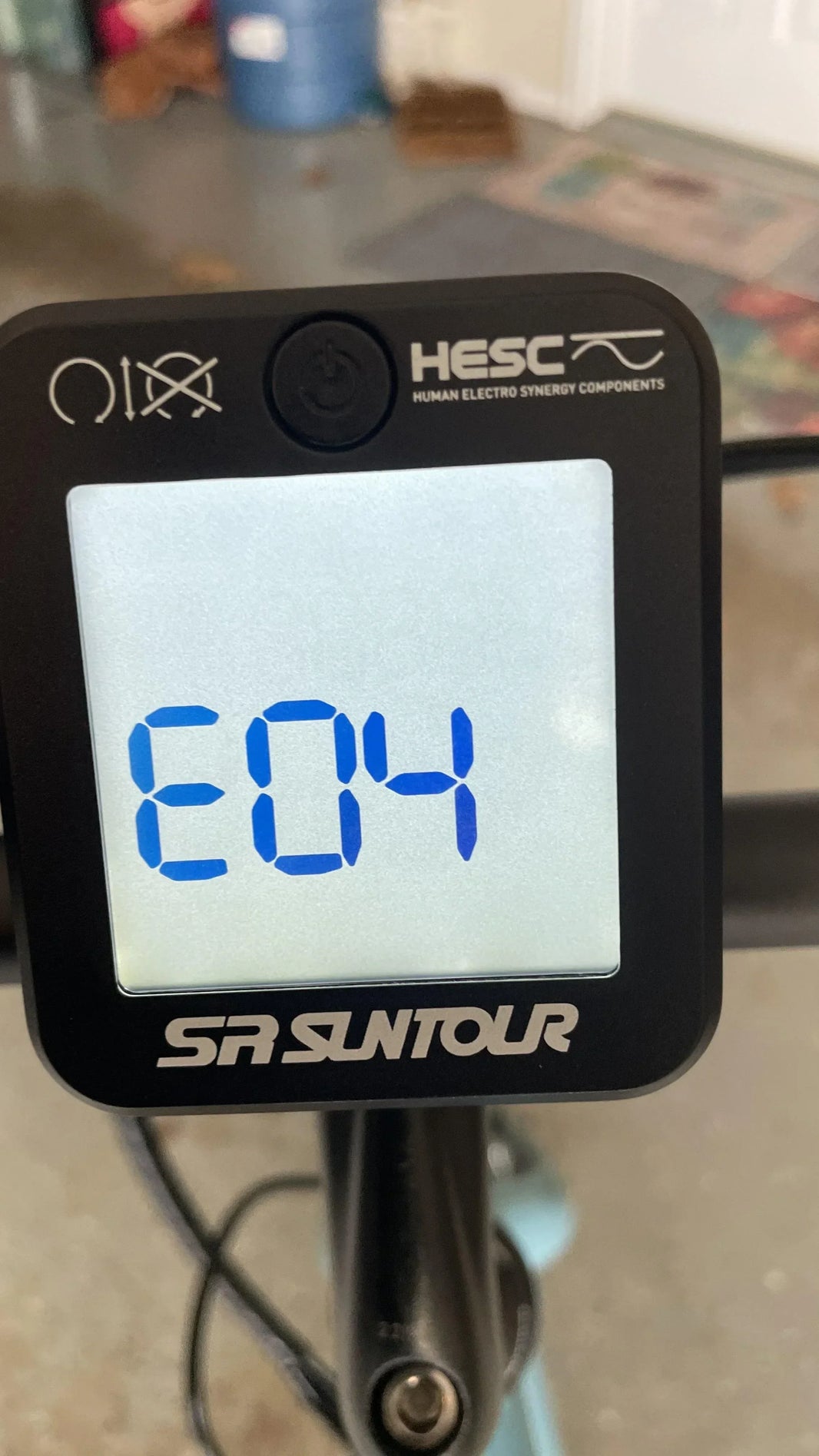Learn how to choose the right bike rack for an electric bike without a towbar. We review the selection criteria (load capacity, robustness, ease of installation, etc.), the types available (trunk/tailgate or roof-mounted), their advantages and disadvantages, the safety rules to follow, and examples of recommended models.
The criteria for choosing the right electric bike rack without a towbar
The first criterion is the load capacity . Electric bikes often weigh between 20 and 30 kg, so it is essential to choose a bike rack designed for this load. Indeed, if the product is not specifically " for electric bikes ", it is imperative to check the maximum weight it can support. A conventional bike rack for non-electric bikes may not be able to support a 25 kg e-bike, which risks damaging the bike or the vehicle.
Other important criteria: the strength and stability of the bike rack. The rack must be robust (solid metal frame, reliable straps and hooks) to ensure the stability of a heavy bike on the road. It is better to choose a model designed for electric bikes and examine the comments on the manufacturing quality (welding, paint, etc.). Also check that the bike frame and wheels are securely fastened (adjustable hooks, non-slip, integrated anti-theft devices if applicable) to prevent any movement during transport.
Compatibility with your vehicle is another factor. Make sure the bike rack fits the type of car (trunk shape, presence of roof bars, etc.). For example, a "hatchback" model attaches to the trunk, while a "roof rack" model requires pre-installed bars on the roof. Therefore, you should check the vehicle's clearance (length/width) and available height, as well as the dimensions of your bike (tire size, frame width). Some bike racks offer optional parts, such as rails or supports for wide tires (fat bikes).
Ease of installation is also worth considering. Ideally, assembly should be quick and tool-free to save time. For example, some models are foldable and can be easily stored in a bag. Check whether the straps, hooks, and belts are pre-assembled or whether they need to be installed manually. A good bike rack should allow you to attach your bike in just a few moments, without any hassle.
Finally, consider ease of use : an advanced bike rack will have practical features (loading ramp for loading the bike without lifting it, safety lock, tilt for trunk access, etc.). These options make everyday use easier. Also evaluate the price, balancing cost and robustness – investing in a quality model is often safer in the long run.
Key points:
-
Load capacity – the bike rack must support the weight of the e-bike (check at least 25–30 kg per bike).
-
Strength and stability – sturdy structure, reliable straps and hooks to compensate for the heavy weight.
-
Compatibility – check suitability to the vehicle (type of attachment to tailgate or roof, dimensions of trunk/roof).
-
Ease of installation – prefer tool-free assembly, with pre-assembled straps and hooks.
-
Practical options – loading ramps, safety lock, tilting system for opening the trunk, etc.
The different types of towbar-free bike racks

There are essentially two main types of towbar-free bike racks: trunk-mounted (or tailgate-mounted) bike racks and roof-mounted bike racks. Each has its own advantages and limitations.
Trunk/tailgate bike rack
The tailgate bike rack attaches to the rear of the car using straps and hooks around the trunk. This is a very popular solution because it doesn't require a towbar or roof racks. Generally, this type of rack is ideal for cars without a towbar or roof rack . Upway notes that it's "particularly suitable for cars without a towbar or roof rack" and is "ideal for carrying one e-bike, or two at most." This means that in practice, a maximum of two e-bikes can be attached, as the load capacity often limits this number.
The advantages of the tailgate bike rack are numerous:
-
Affordable cost : it is often less expensive than a towbar system.
-
Easy installation : simply attach straps and hooks to the trunk, which is quick and does not require large tools.
-
Practical for occasional use : it folds and stores easily when not in use.
Disadvantages to know:
-
Limited load : Many models limit the weight per bike to around 15–20 kg, which may be insufficient for a heavy e-bike (often 20–25 kg each).
-
Stress on the trunk : the weight of the electric bike exerts strong pressure on the tailgate, hence the importance of carefully checking the robustness of the attachment.
-
Restricted trunk access : Once the bike rack is installed, it can be difficult to open the trunk without first removing the rack or tilting the structure.
Concrete example: Auto Plus tests identify common hatchback models, such as the Mottez Athena High (score 4/5) and the Decathlon 320 (3.5/5), which are reinforced versions (with a raised platform) to avoid damaging the bikes. Note, however, that these racks often limit the weight per bike (around 15 kg).
Bike rack on roof bars
The roof rack bike rack is attached to crossbars already installed on the vehicle's roof. It therefore requires the use of suitable roof racks (on estate cars, SUVs, or sedans). This system has the advantage of completely freeing up the rear of the vehicle : you can maintain access to the trunk and a clear view of the rear. In addition, it is very stable (the bike is securely attached to the roof) and does not increase the length or width of the vehicle.
On the other hand, this type of roof bike rack also has constraints:
-
More complex and expensive installation : you must first purchase and install roof bars, which represents an additional cost.
-
Load limitations : Many roof racks are designed for only ~20 kg maximum. However, e-bikes often weigh 20–30 kg each. One tip to reduce weight is to remove the removable battery from the bike when loading.
-
Loading difficulty : Lifting an electric bike to the roof can be difficult, especially if the vehicle is high.
-
Increased fuel consumption : Bikes on the roof increase air resistance, which can affect fuel consumption.
Good to know: Roof-mounted bike racks are very stable and free up the rear of the vehicle, but often require expensive roof bars and make loading more difficult due to the height.
Advantages and disadvantages of towbarless bike racks
In summary, towbarless systems (tailgate or roof) offer an accessible and easy-to-implement solution for transporting an e-bike, without having to install a towball. They are generally less expensive and more versatile than a towbar-mounted bike rack. However, they remain less stable and often have a lower load capacity, which requires extra caution: for example, it is recommended not to exceed 100–130 km/h when the vehicle is loaded with a heavy bike rack.
Advantages (without hitch):
-
No need to install a towbar (saves time and money).
-
Easy to use for occasional needs.
-
Compact and foldable: easier to store.
Disadvantages:
-
Limited capacity and stability (be careful of the weight of the VAE).
-
Risk of masking the license plate or rear lights (see regulations below).
-
Need to properly secure bicycles (risk of falling, driver's responsibility).
-
Reduced speed recommended on motorways when loaded.
Regulations you need to know when transporting an electric bike by car

Road safety rules do not explicitly distinguish between electric bikes and conventional bikes, but the higher weight of an e-bike may require more precautions. Main obligations:
-
Visibility of the license plate and rear lights: the car's license plate and signal lights must remain perfectly visible once the bike rack is installed. If the bike or rack obscures them, an additional approved signaling device (additional license plate and light repeater) must be installed.
-
Dimension limits: The maximum width of the vehicle (with the bike rack and attached bikes) must not exceed 2.50 m according to the French standard. In Switzerland, lateral overhang of up to 20 cm on each side (total width 2 m) is permitted without additional signs. Rear overhang is permitted up to 1 m without signs, and between 1 and 3 m with reflective tape or a red-white warning sign.
-
Special signage: If the bike rack protrudes from the vehicle, you must affix reflective markers and/or additional lights. In France, if the load exceeds 1 m, a retro-reflective strip is mandatory. In Belgium, for example, a rear fog light is required. In Switzerland, a sign is only required for any rear overhang >1 m.
-
Road safety: as with any load, regularly check the securing (strap tension, hook attachment). It is advisable to remove removable parts from the bike (battery, water bottles, computer) to limit the risks in the event of ejection. Finally, ride carefully (the size of the load affects road handling and fuel consumption).
By respecting these rules (in particular good visibility of the plate/lights and the 1 m limit without signs), you can transport your electric bike completely legally.
Examples of recommended towbar-free bike racks (2025)

Here are some models often cited in 2025 for their reliability and good value for money:
-
Mottez Athena High (tailgate) – Raised platform rack for easy loading and limited contact with sheet metal. Holds up to 3 bikes, with a limit of ~15–20 kg per bike : check the weight of your e-bikes before use.
-
Decathlon 320 (tailgate) – Lightweight, pre-assembled model (straps included), easy to install, capacity for up to 3 bikes, best suited to lightweight bikes or de-battery-powered e-bikes.
-
Norauto Strap 100-3R (tailgate) – Strap-on bike rack for 3 bikes, robust but requiring precise adjustments; strictly observe the tightening torques and weight distribution.
-
Menabo Steel Bike 3 (tailgate platform) – Raised platform for 3 bikes, useful for avoiding placing the bike on the sheet metal; on the other hand, the whole thing is heavier and more cumbersome to handle.
-
“Rooftop” option – Specialized brands (e.g. “upright” models with wheel clamps) exist, but check the maximum load of the roof bars (often ~20–25 kg) and consider removing the battery from the e-bike to make lifting easier.
These examples are not exhaustive and are subject to product updates. To discover other suitable models (including some designed for electric bikes), visit the Batoo Bike website where a selection of transport accessories is available.
In addition, Batoo Bike also offers advice and accessories for electric bikes, including bike racks adapted to your needs .
FAQ
What type of bike rack is best for a car without a towbar?
For a car without a towbar, the most common is the tailgate (trunk) bike rack . This system attaches to the rear with straps, and is "particularly suitable for cars without a towbar or roof bars." It can usually carry one or two e-bikes. The other option is the roof rack (if you already have roof bars), but this requires a roof rack and more loading effort.
Can a conventional bike rack support the weight of an electric bike?
Not necessarily. Racks not specifically designed for e-bikes may not be able to handle the 20–25 kg of an e-bike. It's crucial to check the stated load capacity . If the product doesn't say "e-bike," check the maximum weight per bike and in total. A rack designed for conventional bikes may warp or break if the e-bike is too heavy.
Is special signage required to transport an electric bike on the rear of the vehicle?
The regulations do not distinguish between electric bikes and normal bikes. However, if the bike rack or the bike obscures the license plate and/or rear lights , you must install additional approved signage (additional license plate and light repeater). Similarly, any significant rear overhang (>1 m) must be indicated by a reflective strip or a compliant sign. In summary: as long as your license plate and lights remain visible, no specific signage is required, even with an e-bike.
How many electric bikes can you transport without a hitch?
It depends on the bike rack model. Most trunk-mounted bike racks can safely accommodate two . Upway specifies that a tailgate-mounted model is "ideal for transporting one electric bike, two maximum." Some raised or platform models (see Auto Plus tests) can carry three bikes, but then each bike must not exceed ~15 kg. In practice, to comfortably transport heavy e-bikes, we often limit ourselves to 1 or 2 bikes on these racks without a hitch.
What are the best towbar-free bike racks in 2025?
Among the racks tested recently (2023–2024), we particularly note: the Mottez Athena High (4/5) for 3 bikes on a tailgate, the Decathlon 320 (3.5/5) for 3 bikes, and the Norauto Strap 100-3R (3.5/5) for 3 bikes. These models are robust and well-rated, but limit the load to ~15–20 kg per bike. For 1 or 2 heavier e-bikes, an inclined platform-type bike rack (like the Menabo Steel Bike 3) can be interesting because it avoids placing the bike on the sheet metal, but it remains heavy to handle. Whatever your choice, make sure that it is “approved” for e-bikes (capacity ≥ bike weight) and complies with road safety standards.


